September 2023 Sunshine State Stats
In September 2023, the monthly average high and low temperatures each dropped by four degrees as the onset of autumn delivered some relief from the intense heat of summer. The average high temperature of 90 degrees, versus 94 in August, matched the decline of the average low temperature, which fell to 72 degrees versus 76 degrees last month. Rainfall reported from Leesburg International Airport (KLEE) increased over August by only 9 one-hundredths of an inch, totaling 4.78 inches.
Central Florida has been spared from major hurricane punishment. So far this season, Hurricane Idalia has been the only major hurricane to impact Florida directly. The National Hurricane Center states that despite this, “tropical cyclone activity in the Atlantic basin was generally above normal in September.” Seven named storms were formed, with one (Lee) becoming a major hurricane. Fortunately, Hurricane Lee became a category 5 hurricane far north of Florida.
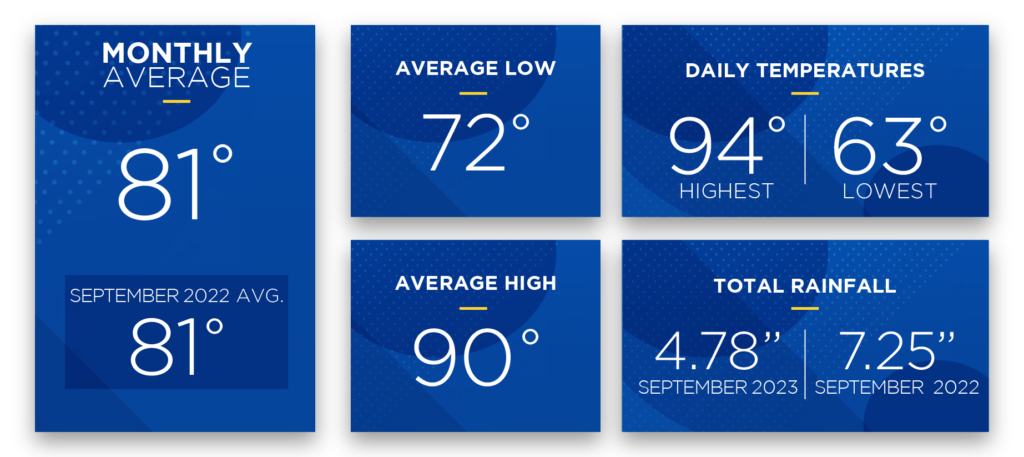
Measurable precipitation occurred on 14 of 30 days, and the daily rain total rose above ½ inch only twice. The monthly precipitation of 4.78 inches is below the total for the same month last year when 7.25 inches fell at Leesburg International Airport (KLEE). Thunderstorm activity was heavier in the first two weeks of the month than in the second half, as noted in the Lightning Archive Report below (data and charts provided by weathersentry.dtn.com).
Week 1: 9/1 – 9/8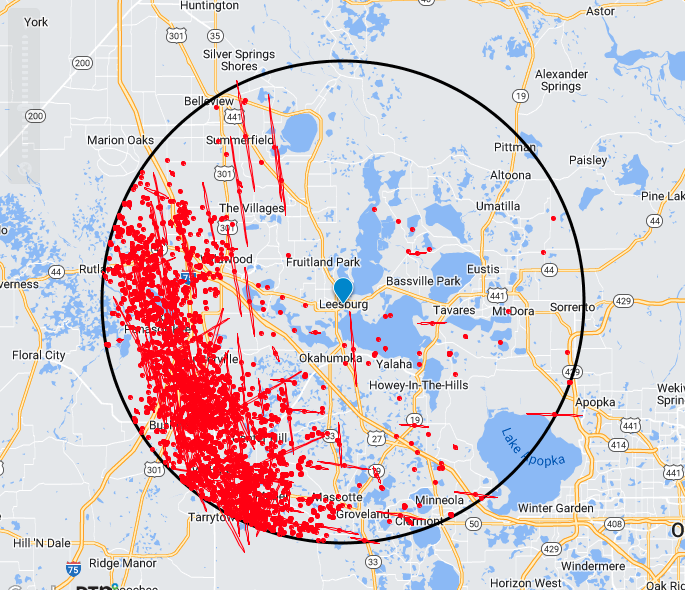 3675 strikes |
Week 2: 9/8 – 9/15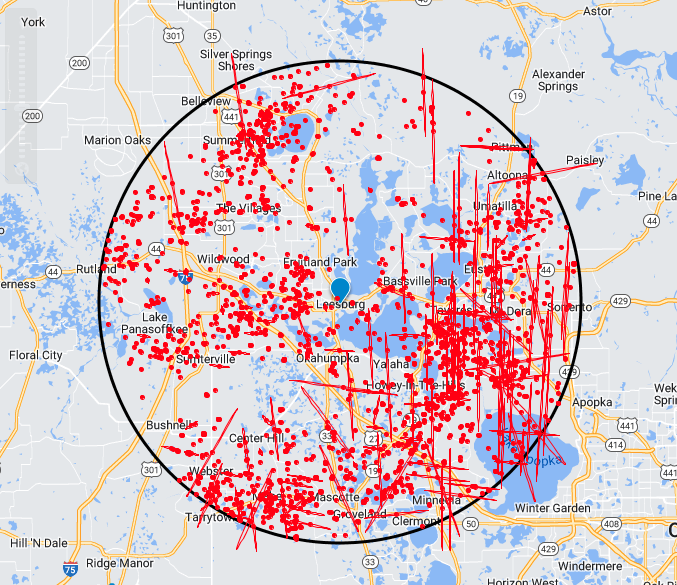 2631 strikes |
Week 3: 9/15 – 9/22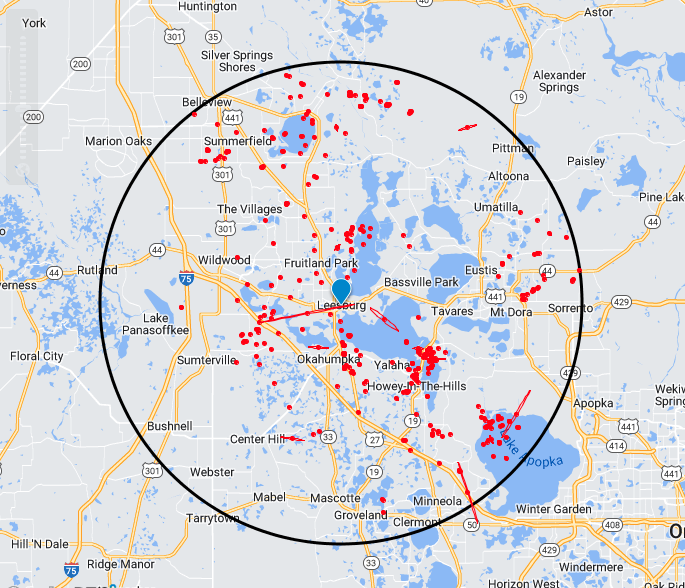 438 strikes |
Week 4: 9/22 – 9/30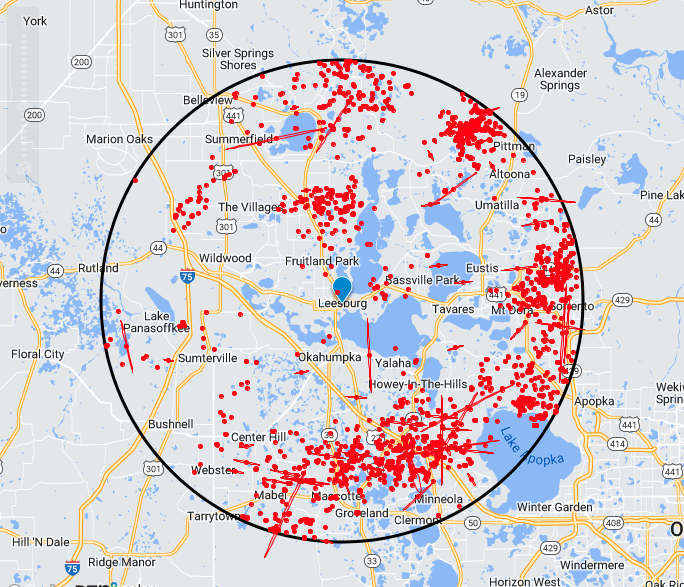 2177 strikes |
The declining temperatures were evident as September wore on, as the high did not exceed 90 degrees during the last ten days of the month. The highest daily recorded temperature (data from the Leesburg KLEE weather station) in September was 94 degrees (on September 11, 14, and 15), and the lowest was 63 – 10 degrees lower than the lowest in August – occurring on September 23, 2023.
HVAC is the largest energy user in Central Florida homes, accounting for an average of 35 to 40% of kWh usage. Electric pool heaters will be working harder to maintain summer-like temperatures now. As evenings become cooler, the electricity needed to elevate the warmth of the pool water rises. If your use of a heated pool is diminishing, it may be cost-effective to turn the heater off until the pool is expected to be in use again.
This next month may be a good time to consider using ambient air to cool your home. Cool evenings can be a dollar-wise way to bring outdoor comfort indoors. Also, be sure to revisit your thermostat settings to take advantage of savings opportunities presented by moderating temperatures. The energy-efficient thermostat setting during hotter months is 78 degrees and during colder months it is 68 degrees.
October forecast from The Old Farmer’s Almanac:
The weather outlook for October 2023 presents a monthly average temperature in the mid-seventies with precipitation totals (3.5 inches) about 1 inch lower than average. Look for thunderstorms accompanying mild weather in the first week, a few showers with cooler days in the second week, followed by isolated showers in week three. The Old Farmer’s Almanac predicts that October will conclude with a week of sunny days with mild temperatures.
We may have passed the statistical peak of hurricane season—September 10—but the season does not end until November 30. Take inventory of your emergency supplies and stay aware of long-range weather forecasts that may indicate tropical storm formation in the Atlantic.
Online Energy-Efficiency Tools
Log into SmartHub to view past bills and consumption charts to check historical usage. If your usage is high, SECO offers several energy-efficiency tools to help you identify energy wasters. Take the Home Energy Assessment to receive a detailed email tailored to your home’s features and lifestyle. The energy-saving advice will provide low-cost ways to decrease your usage – and your electric bill.
To easily calculate how much energy your appliances, lighting, electronic devices, and other energy-using items in your home consume, use the Energy Estimator.






